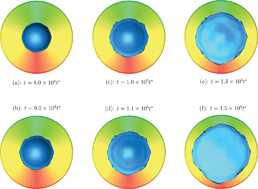A three dimensional soft matter cell model for mechanotransduction
Abstract
An active multiscale three-dimensional (3D) soft matter cell model is developed to study the mechanotransduction of stem cells in an attempt to explain mechanical information exchange between the cells and their extracellular environment. In the proposed soft matter cell model, the cortical actin–myosin flow or the cytoplasmic flow is modeled as an active nematic fluid gel, the cell


 Please wait while we load your content...
Please wait while we load your content...